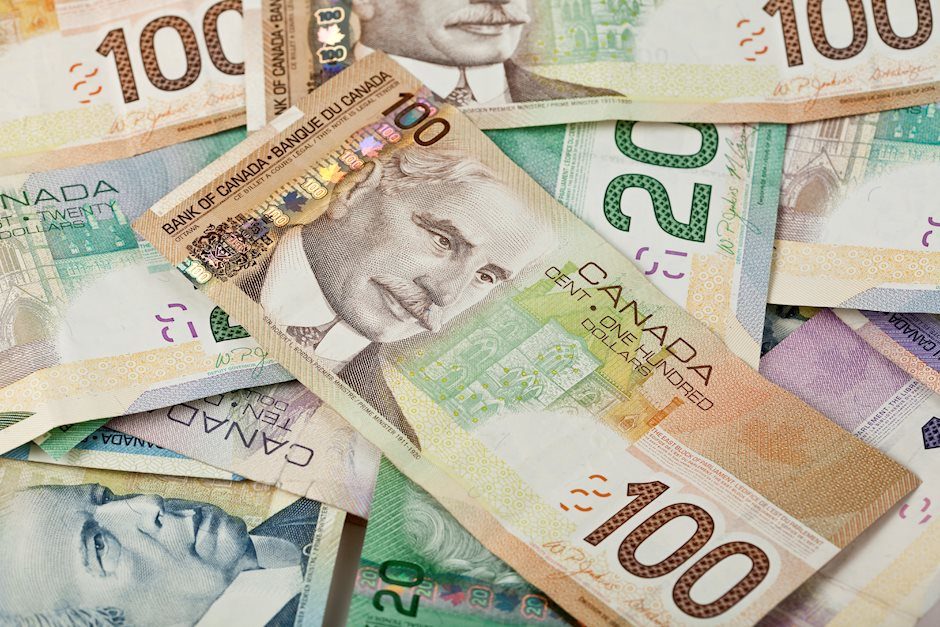USD/CAD trades with modest losses below 1.3600 amid mixed cues, ahead of Fed
- USD/CAD meets with a fresh supply on Wednesday amid a dovish Fed-inspired USD downtick.
- Bets for a larger BoC rate cut, retreating Oil prices to undermine the CAD and lend support to the pair.
- Traders might also prefer to wait on the sidelines ahead of the crucial FOMC policy decision.

The USD/CAD pair attracts fresh sellers during the Asian session on Wednesday and currently trades below the 1.3600 mark, down less than 0.10% for the day. Spot prices, meanwhile, remain confined in a familiar range held over the past week or so as traders keenly await the key central bank event risk before positioning for the next leg of a directional move.
The US Federal Reserve (Fed) is scheduled to announce its policy decision at the end of a two-day meeting later today and is universally expected to start its rate-cutting cycle. Apart from this, the market focus will be on the updated economic projections, including the so-called 'dot plot', which will play a key role in influencing the near-term US Dollar (USD) price dynamics and provide some meaningful impetus to the USD/CAD pair.
In the meantime, rising bets for an oversized, 50 basis points (bps) interest rate cut by the Fed overshadow Tuesday's upbeat US Retail Sales and cap the USD recovery from its lowest level since July 2023, which, in turn, is seen weighing on the USD/CAD pair. An unexpected rise in the US Retail Sales eased concerns about a broader economic slowdown, though the market reaction turned out to be short-lived amid dovish Fed expectations.
The downside for the USD/CAD pair, meanwhile, seems cushioned in the wake of hopes for a larger rate cut by the Bank of Canada (BoC) next month, bolstered by Tuesday data that Canada's inflation reached the central bank's 2% target in August. This, along with a modest downtick in Crude Oil prices, could undermine the commodity-linked Loonie and offer some support to the USD/CAD pair, warranting caution for bearish traders.
Canadian Dollar FAQs
The key factors driving the Canadian Dollar (CAD) are the level of interest rates set by the Bank of Canada (BoC), the price of Oil, Canada’s largest export, the health of its economy, inflation and the Trade Balance, which is the difference between the value of Canada’s exports versus its imports. Other factors include market sentiment – whether investors are taking on more risky assets (risk-on) or seeking safe-havens (risk-off) – with risk-on being CAD-positive. As its largest trading partner, the health of the US economy is also a key factor influencing the Canadian Dollar.
The Bank of Canada (BoC) has a significant influence on the Canadian Dollar by setting the level of interest rates that banks can lend to one another. This influences the level of interest rates for everyone. The main goal of the BoC is to maintain inflation at 1-3% by adjusting interest rates up or down. Relatively higher interest rates tend to be positive for the CAD. The Bank of Canada can also use quantitative easing and tightening to influence credit conditions, with the former CAD-negative and the latter CAD-positive.
The price of Oil is a key factor impacting the value of the Canadian Dollar. Petroleum is Canada’s biggest export, so Oil price tends to have an immediate impact on the CAD value. Generally, if Oil price rises CAD also goes up, as aggregate demand for the currency increases. The opposite is the case if the price of Oil falls. Higher Oil prices also tend to result in a greater likelihood of a positive Trade Balance, which is also supportive of the CAD.
While inflation had always traditionally been thought of as a negative factor for a currency since it lowers the value of money, the opposite has actually been the case in modern times with the relaxation of cross-border capital controls. Higher inflation tends to lead central banks to put up interest rates which attracts more capital inflows from global investors seeking a lucrative place to keep their money. This increases demand for the local currency, which in Canada’s case is the Canadian Dollar.
Macroeconomic data releases gauge the health of the economy and can have an impact on the Canadian Dollar. Indicators such as GDP, Manufacturing and Services PMIs, employment, and consumer sentiment surveys can all influence the direction of the CAD. A strong economy is good for the Canadian Dollar. Not only does it attract more foreign investment but it may encourage the Bank of Canada to put up interest rates, leading to a stronger currency. If economic data is weak, however, the CAD is likely to fall.
Author

Haresh Menghani
FXStreet
Haresh Menghani is a detail-oriented professional with 10+ years of extensive experience in analysing the global financial markets.

















